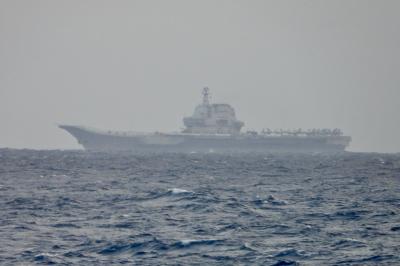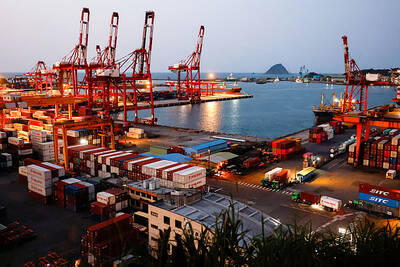At a plush Hong Kong airport hotel, the only sign of activity comes from the dining-room where a lineup of locals fill up their plates at a dinner buffet offered at a promotional rate to Hong Kong residents.
Before the slowdown, the hotel lobby would have been filled with business travelers working on laptops or having a drink at the bar. These days, the empty lobby bears testament to the effects of the global slump on Hong Kong’s US$20.4 billion tourism sector.
To get through the slump, the airport hotel has had to resort to promotional buffets and cheap spa packages for locals.
As dwindling earnings prompt companies globally to slash travel budgets, Asia has been hard hit with hotel room rates falling for the first time in five years and airlines suffering.
“Companies are now looking at what business travel is revenue generating and are cutting non-revenue producing travel,” said Susan Gurley, executive director of the US-based Association of Corporate Travel Executives.
It’s not just hotels that are feeling the pinch, long-haul business travel has declined along with business activity.
Asia-Pacific carriers are among the worst affected airlines from the global economic turmoil, according to the International Air Transport Association. They stand to lose US$1.7 billion this year, it said.
Singapore Airlines has cut some of its business-class only flights to the US and demand for Japan Airlines’ premium cabins has fallen by 20 percent on long-haul routes.
Besides business trips, which many companies are allowing on an exception-only basis, travel for regional in-house meetings and company retreats has been slashed.
Such non-essential travel constitutes up to 40 percent of an average corporation’s travel budget, Gurley said.
Investment banks and other companies have forced executives to forego club class for economy on short-haul flights and Gurley says employers are combing expense accounts, refusing to pay mini-bar charges and downgrading staff to cheaper hotels.
Hotel room rates in Seoul have dropped by more than 20 percent in the past year. In Manila, they plunged by more than 30 percent, the most marked decline across the region.
With Japan, Hong Kong, Singapore and Taiwan in recession, and some companies asking employees to defer travel to Thailand following violent anti-government protests in Bangkok, the outlook for travel in Asia is not promising.
Hong Kong and Singapore, with no domestic travel, are being hit by declining participation at conferences and trade fairs. Tourism constituted 7 percent of Hong Kong’s GDP last year when the territory, which serves as a gateway into China, drew 3.6 million business travelers out of a total of 29.5 million visitors.
Attendance at the Hong Kong Toy and Games Fair, Asia’s largest toy fair, which usually draws the world’s biggest retailers, was down 20 percent this year as the industry reels from declining US and European consumption.
Yet some experts say that while cutting back travel might seem like an easy way to reduce costs when business slows, it could take a toll on future competitive advantage, especially if rivals don’t take similar cost-cutting steps.
In a survey released by the US Travel Association last month, 72 percent of respondents said they saw an opportunity to capture market share by increasing travel as others cut back.
Fifty-three percent said companies that reduce business travel will give an advantage to competitors who maintain their travel commitments.
“It’s ... clear from our survey results that the old maxim remains true: If you don’t take care of your customers, someone else will,” Suzanne Cook, the association’s senior vice president of research, said on releasing the study.
Travel to China and India, in contrast, is holding up much better because those markets are too important and competition for market share is intense, analysts say.
Shanghai is one of few cities globally where hotel rates are actually higher than a year ago, by 2 percent, according to Hotels.com, although room rates in Beijing have dropped 13 percent.
Pressure to cut costs is encouraging firms to adopt video teleconferencing facilities, a worldwide trend that Gartner Research estimates will replace 2.1 million airline seats annually by 2012, costing the travel industry US$3.5 billion a year.
“The [financial] crisis has almost served as a catalyst for businesses to give these products a go as they are now faced with stark budget cuts across the board, especially for business travel,” said Tng Szu Lin at IT services provider Datacraft Asia Ltd, adding that enquiries about videoconferencing services have doubled since September.
Cutbacks on first and business class travel and rooms at top hotels also reflect an unwillingness by managers to be seen enjoying luxury fringe benefits at company expense when employees are losing their jobs, analysts say.
Demand for private jets, which was at an all-time high at the beginning of last year has crumbled, according to Deloitte, ironically triggering thousands of job losses at corporate jet makers including Canada’s Bombardier Inc this year.
“At a time of political scrutiny, of non-essential corporate spending, the mere appearance of spending on ‘extravagant’ corporate jets can have damaging consequences,” Deloitte said in a report on the aviation industry.

US President Donald Trump yesterday announced sweeping "reciprocal tariffs" on US trading partners, including a 32 percent tax on goods from Taiwan that is set to take effect on Wednesday. At a Rose Garden event, Trump declared a 10 percent baseline tax on imports from all countries, with the White House saying it would take effect on Saturday. Countries with larger trade surpluses with the US would face higher duties beginning on Wednesday, including Taiwan (32 percent), China (34 percent), Japan (24 percent), South Korea (25 percent), Vietnam (46 percent) and Thailand (36 percent). Canada and Mexico, the two largest US trading

China's military today said it began joint army, navy and rocket force exercises around Taiwan to "serve as a stern warning and powerful deterrent against Taiwanese independence," calling President William Lai (賴清德) a "parasite." The exercises come after Lai called Beijing a "foreign hostile force" last month. More than 10 Chinese military ships approached close to Taiwan's 24 nautical mile (44.4km) contiguous zone this morning and Taiwan sent its own warships to respond, two senior Taiwanese officials said. Taiwan has not yet detected any live fire by the Chinese military so far, one of the officials said. The drills took place after US Secretary

CHIP EXCEPTION: An official said that an exception for Taiwanese semiconductors would have a limited effect, as most are packaged in third nations before being sold The Executive Yuan yesterday decried US President Donald Trump’s 32 percent tariff on Taiwanese goods announced hours earlier as “unfair,” saying it would lodge a representation with Washington. The Cabinet in a statement described the pledged US tariffs, expected to take effect on Wednesday next week, as “deeply unreasonable” and “highly regrettable.” Cabinet spokeswoman Michelle Lee (李慧芝) said that the government would “lodge a solemn representation” with the US Trade Representative and continue negotiating with Washington to “ensure the interests of our nation and industries.” Trump at a news conference in Washington on Wednesday announced a 10 percent baseline tariff on most goods

THUGGISH BEHAVIOR: Encouraging people to report independence supporters is another intimidation tactic that threatens cross-strait peace, the state department said China setting up an online system for reporting “Taiwanese independence” advocates is an “irresponsible and reprehensible” act, a US government spokesperson said on Friday. “China’s call for private individuals to report on alleged ‘persecution or suppression’ by supposed ‘Taiwan independence henchmen and accomplices’ is irresponsible and reprehensible,” an unnamed US Department of State spokesperson told the Central News Agency in an e-mail. The move is part of Beijing’s “intimidation campaign” against Taiwan and its supporters, and is “threatening free speech around the world, destabilizing the Indo-Pacific region, and deliberately eroding the cross-strait status quo,” the spokesperson said. The Chinese Communist Party’s “threats